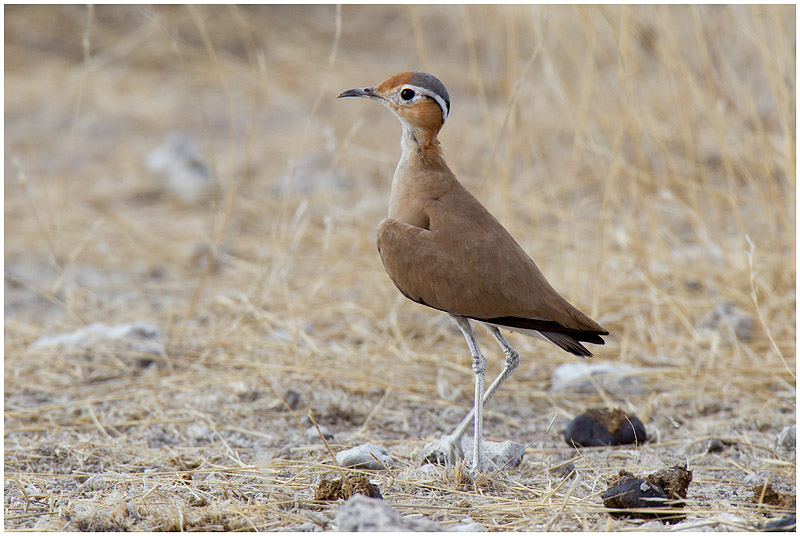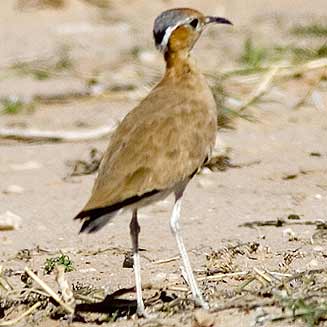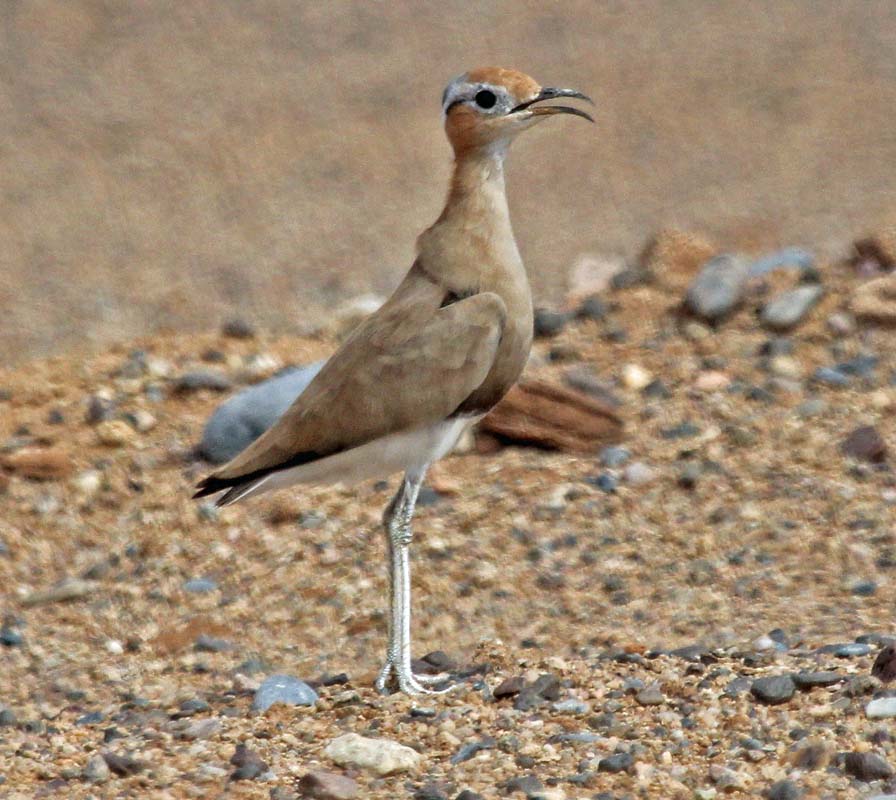
Cursorius rufus
SUBFAMILY
Cursoriinae
TAXONOMY
Cursorius rufus Gould, 1837, Potchefstroom, South Africa.
Monotypic.
OTHER COMMON NAMES
French: Courvite de Burchell; German: Rostrennvogel; Spanish:
Corredor Rufo.
PHYSICAL CHARACTERISTICS
7.8–8.7 in (20–22 cm); 2.7–3.4 oz (76–95 g). More or less uniform
brown, paler and more rufous below, shading to dark
brown bar on upper belly; lower belly white; eye-stripe blackand-
white; hind-crown blue-gray. Legs long and white. Bill
moderately long and decurved.
DISTRIBUTION
Southern Africa from Angola and Namibia to inland South
Africa and southern Botswana.
HABITAT
Desert, semi-desert, open, short grassland.
BEHAVIOR
Usually in pairs or small parties of up to 10 birds. Rather shy,
running quickly away when disturbed. Takes flight when hard
pressed.
FEEDING ECOLOGY AND DIET
Feeds mainly on insects caught by surface pecking or by digging
with bill in soft soil or sand. Rarely takes seeds.
REPRODUCTIVE BIOLOGY
Breeds at almost any time of year, laying two blackish eggs on
bare ground, often among antelope droppings. Incubation and
fledging periods not known. Chicks highly precocial, but are
fed by parents for a few weeks after hatching.
CONSERVATION STATUS
Formerly common over most of its range, Burchell’s courser
has undergone a significant decline in numbers. Reasons for
this are not known, but the species is sensitive to disturbance
and possibly to overgrazing of semi-desert habitat.
SIGNIFICANCE TO HUMANS
None known.
Photo Gallery of - Burchell’s courser




 Animalia Life
Animalia Life